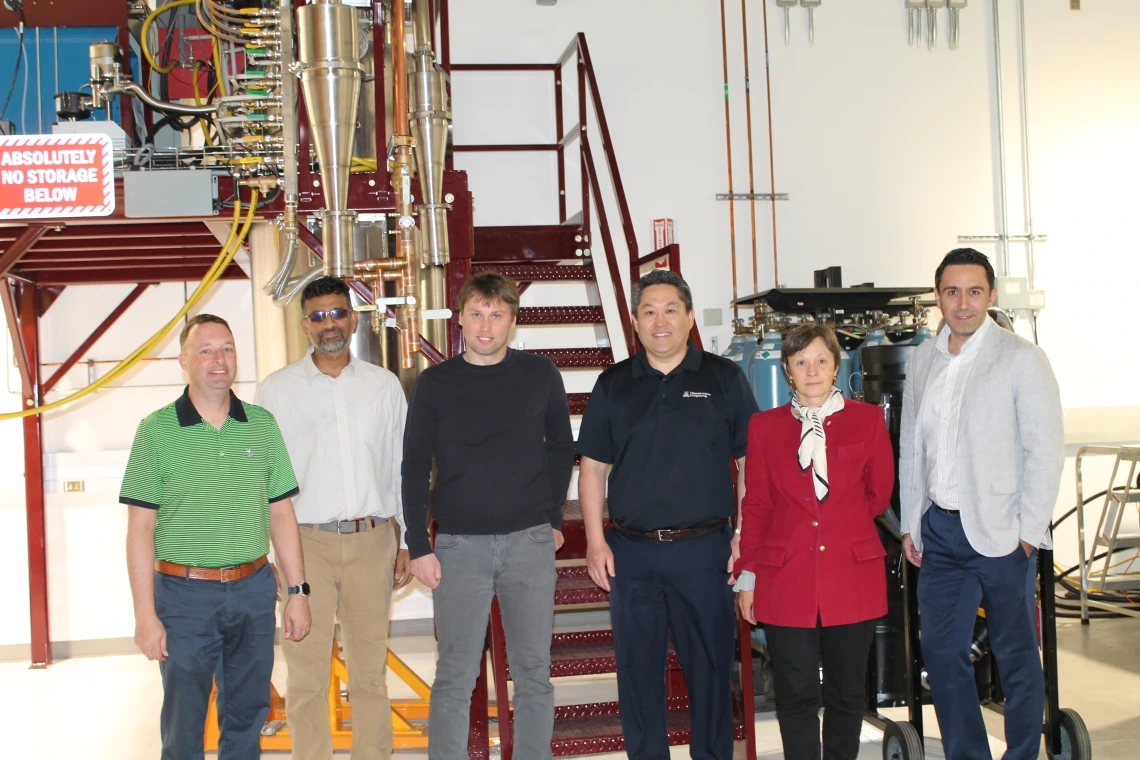Research project aims to break hypersonic barriers

The Mach-X research team (from left, Andrew Wessman, Krishna Muralidharan, Benoit Revil-Baudard, Sammy Tin, Oana Cazacu and Kavan Hazeli) is working for the first time in the university’s Applied Research Building.
A University of Arizona engineering effort to make hypersonic vehicles faster and more affordable could deliver far-reaching outcomes. The U.S. Army awarded $3.1 million over two years to a research group led by Sammy Tin, the Patrick R. Taylor Endowed Department Leadership Chair for the Department of Materials Science and Engineering.
Tin and five U of A College of Engineering colleagues are exploring the use of multiple metallic alloys and additive manufacturing to enable fabrication of Mach-X – pronounced mock-ex – aerospace technologies as part of a federal governmental push. Mach-X vehicles will travel at speeds faster than Mach 5, which is five times the speed of sound and the hypersonic threshold.
"This important research partnership draws on the university's deep experience and strategic investments in hypersonics and is tied to an area of strategic importance for the university: advancing leadership in space sciences, space technology and national security," said Tomás Díaz de la Rubia, U of A senior vice president for research and innovation.
The two-year project will advance additional national priorities and bring the Army closer to deploying Mach-X vehicles, said David W. Hahn, the Craig M. Berge Dean of the College of Engineering.
